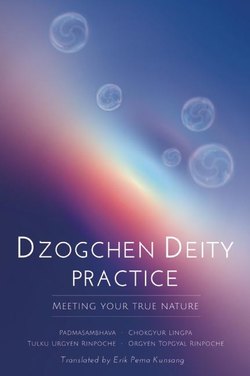Читать книгу Dzogchen Deity Practice - Падмасамбхава - Страница 15
На сайте Литреса книга снята с продажи.
ОглавлениеStructure of the Kunzang Tuktig Cycle of Teachings
Tulku Urgyen Rinpoche
THE TEXTS
The Kunzang Tuktig terma, itself, consists primarily of three termas:
The sadhana, which is called Leyjang;
The empowerment texts, including both the general empowerment of the peaceful and wrathful ones and the extraordinary empowerment of ground, path, and fruition; and
The Triyig, the guidance manual by the name of Döntri.
Over the years, Karma Khenpo, one of the chief disciples of Chokgyur Lingpa and an emanation of Khenpo Bodhisattva, the great master Shantarakshita, who was also an excellent poet, wrote an explanation of the guidance manual. Tersey Tulku, my uncle, added an apology and mending appendix, titled the Zurgyen, at the end of the sadhana. Kyabje Dilgo Khyentse also wrote a commentary on the guidance manual, as requested by the Neten Chokling before he passed away in Bir. Finally, there are some writings by Jedrung Rinpoche, a great master from Riwoche Monastery in Kham, a very important Taklung Kagyü Monastery. Jedrung Rinpoche wrote another empowerment text as well as different commentaries. We should understand, however, that the terma itself was revealed in its entirety, unlike some other termas, where a fraction is discovered and left at that. It is complete, in itself; nothing is missing whatsoever. Although it is very concise, it is complete. In the colophon at the end of text, Padmasambhava explains, “This is a complete sadhana condensed from all the tantras. It is simple to apply, concise, and complete. For the benefit of future generations, may it meet with the destined one.” The destined one refers to Chokgyur Lingpa, who later revealed it. The text also mentions that Yeshe Tsogyal should write it down for this purpose and that the Dzogchen teachings will flourish at the end of the Dark Age.
Mandala
